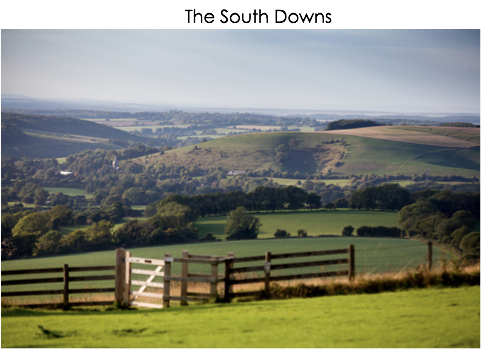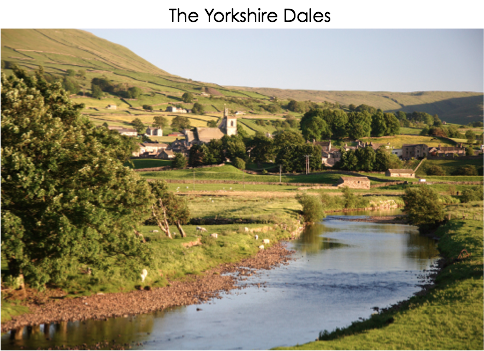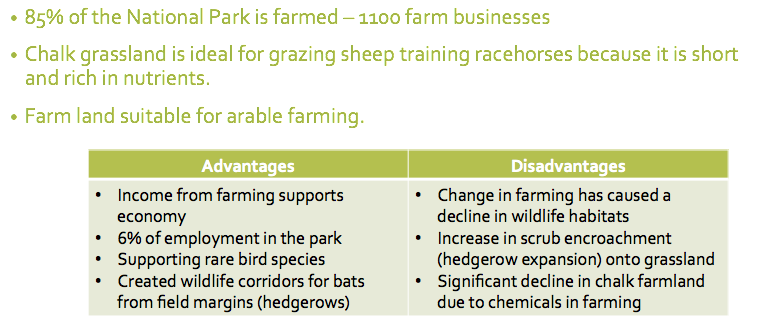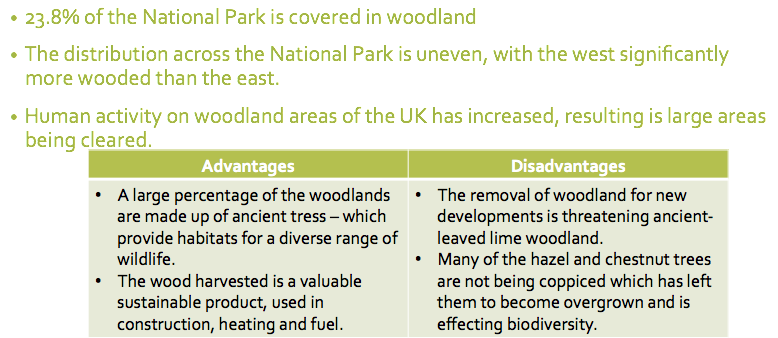Human Processes and Landscapes
Human Use
- Pastoral farming. Mainly sheep, racehorses and some cows are farmed. Soils are too thin to allow much arable farming.
- Settlements. Where chalk meets clay, spring-line settlements (where a ridge of permeable rock lies over impermeable rock and a line of springs form along the boundary between the two) can be seen, eg Fulking in West Sussex. Due to the good access to London, the South Downs are popular as a location for commuters and retired people.
- Racehorse training. For example, stud farms and stables are common at Epsom in Surrey.
- Quarrying. Chalk with flints is a strong building material used in cement manufacture.
Case Study Yorkshire Dales
Dales
- Farming - especially sheep farming - has been a way of life in highland areas for centuries.
- Sheep in the Yorkshire Dales
Advantages
- It has shaped the landscape, helped to build local communities and is an important part of local economies.
Disadvantages
- Farming may harm the environment.
- Trees and other vegetation need to be cleared to provide grazing. This vegetation is important for protecting the landscape from erosion and for providing habitats for wildlife.
- The introduction of too many animals leads to overgrazing, which causes soil erosion which may squeeze out wildlife and pollute water sources. For many farmers this way of life is becoming less economically viable.
The Yorkshire Dales
- Forestry may push out other vegetation and force other activities - such as farming - into decline.
- For some wildlife, the forest will provide a habitat, but other animals will lose their habitat.
- Some people argue that conifer forests debase the landscape - though others think they enhance it.
Case Study South Downs
South Downs
- 85% of the National Park is farmed – 1100 farm businesses
- Chalk grassland is ideal for grazing sheep training racehorses because it is short and rich in nutrients.
- Farm land suitable for arable farming.
- 23.8% of the National Park is covered in woodland
The distribution across the National Park is uneven, with the west significantly more wooded than the east.
Human activity on woodland areas of the UK has increased, resulting is large areas being cleared.
The South Downs is the most populated National Park in the UK – 120,000 people. A large proportion of these people live in the major urban areas of Lewes, Petersfield and Midhurst.
There have been new developments in many settlements in the South Downs in recent years – not always created from local materials and traditional design. Loss of local distinctiveness – decline in community facilities.



